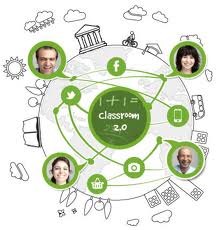"We have the gift of human imagination.. we have to be careful now that we use this gift wisely...And the only way well do it is by seeing our creative capacities for the richness they are and seeing our children for the hope that they are and our task is to educate their whole being so they can face this future...our job is to help them make something of it."
This quote is from Sir Ken Robinson in his TED Talks podcast entitled Do Schools Kill Creativity. In his presentation he talks about the fact that being creative is looked down upon with children and how this needs to change as the times change. The thing that was most intersting to me is that this doesnt just happen in the United States...it happens ALL OVER THE WORLD! Education as a whole is based around academic abilities and the system was created to help industrialization so schools are naturally more interested in math and languages and less interested in the arts.
His clear message is that with the world changing do to our technological advances and our interests in such arts as of recently children need to be able to explore and learn through arts and music as well as the other academic material. He states in his podcast "if your not prepared to be wrong you will not come up with anything original." And originality is a huge part of our world recently..people are able to create videos, games, music, dance, and show case it all on the web for the world to view. Children shouldnt be punished for wanting to create they should be rewarded for wanting to be original.
When I saw the title of this podcast I was instantly interested in what was to be said and I had to watch it. As a mother who advocates for creativity this video was definitely right for me. As I watched I actually felt better about myself for not pushing my two year old to be an academic genius and instead steering her more towards exploring her artistic side. I had looked for a school for my daughter to go to that was more focused on creativity, which is really hard in case your wondering, and when I did I instantly got heat for it by my mother and several of my family members for not putting her in a school that will teach my daughter anything useful.
My cousin actually had sent her child their the previous year and liked it but wasn't to impressed because her daughter didn't turn into a three year old genius who could write and read. Once her daughter was put into a universal Pre-K and went to a different school who is much more structured and based on "education" she felt much better about her daughters learning. I on the other hand have decided that my daughter will definitely not be attending her cousins school because I am pretty sure that it will be okay if shes not reading chapter books by the time she enters Kindergarten. I like that she can go to school and learn through play, she has come home and sang me a song about the days of the week, she knows the difference between her right and left hand, she knows all her colors (shown by a very messy art project) and she is very educated in the five food groups from playing store in the drama area of her classroom. All in all im pretty sure shes learning...even though shes not sitting in a desk like a drone!
The fact that being creative is okay will definitely be a main point in my classroom in the future. I know that children have a creative side and I feel like you can pull that out through education and that children can still learn AND be creative. I think that the best way for me to put this into play in my classroom is by giving students different options on being creative with projects and homework. If you give children the option to create a movie, song, picture and so on they will not only want to do the work they will actually want to learn something to make it better!
So the next time your teaching your students about the civil war give them a project and let them create a song to explain the main points or a lyrical dance to describe what happened. Your children will be engaged and everyone will be entertained. And as always...creativity is knowledge!




















